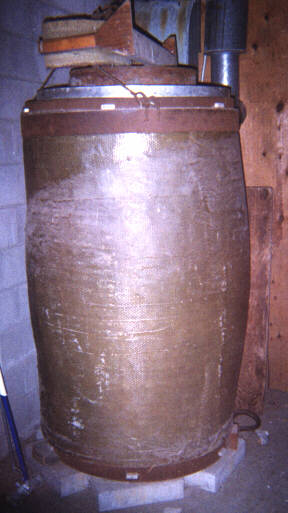
How the HP Belly Skins Got Their Curve
By Bob Kuykendall
If you’ve ever been around the all-metal HP’s (Fiberglass-podded HP-18s and RS-15s don’t count), you’ve noticed that the aluminum skins on the bottom of the forward fuselage have a graceful compound curve to them.
It might seem that this curve could only result from a complicated press-forming operation involving carefully molded dies and huge hydraulic pressing machines - the same way that auto body panels are formed. When you look at those skins, you become certain that Dick must have spent a ton of money producing them.
Wrong.
The truth is that Dick formed all of those belly skins on tooling that would fit into an average closet, using hydraulic pressure from (drum roll please) the water faucet in his workshop.
Magic? Absolutely. Any technology sufficiently developed is indistinguishable from magic.
Here’s how it worked:
For each new design, Dick would hire a local sheetmetal craftsman to form a set of prototype belly skins out of aluminum sheet. That craftsman would make the compound curved skins using an english wheel and judicious amounts of hammering and bumping.
By the way, that local craftsman was none other than longtime Bryan, Ohio resident Morry Hummel. Morry is best known as the designer of the Hummelbird, a single-seat sportplane that cruises at 130 MPH on the power of ½ of a VW engine.
|
|
Anyhow, once the prototype skin was curved just right, Dick would wrap the skin around and join the edges to form a tube. Then he’d make a barrel-like fiberglas mold of the outside of the rolled-up skin.
Next, he’d send the fiberglass barrel off to his friends at some big rubber company (B.F. Goodrich, I think) that makes bladders for aircraft fuel tanks. They’d make a bladder that matched the inside contour of the barrel.
To use that tooling to make a belly skin, Dick would take a piece of flat 2024-0 aluminum, cut it to size, roll it into a tapered tube, and insert it into the barrel. After that, he’d put the bladder into the barrel and clamp end plugs onto the barrel. Then, he’d connect the bladder to a water faucet, and pressurize it to about 150 psi using the pressure of the municipal water system. The water pressure would bulge the skin out and form it to the inside contour of the barrel. When the skin was removed from the barrel it would have the same contour as the prototype skin from which the barrel was molded.
After being heat-treated to the T3 or T4 temper, the skin would be ready to send off to another eager HP builder.
And that’s the way it was.